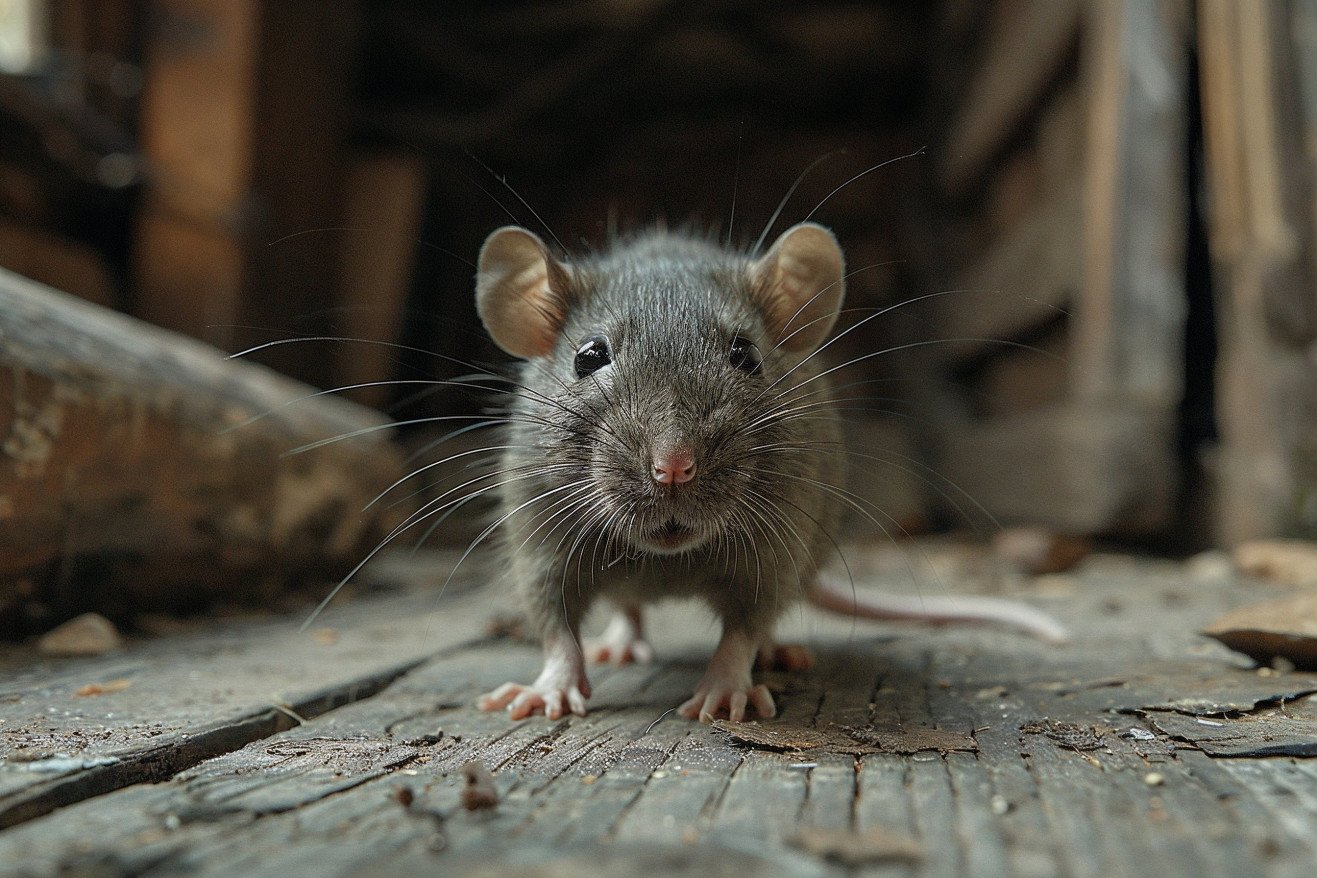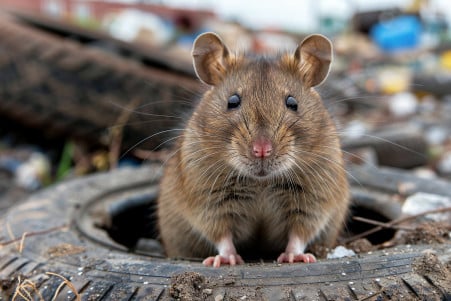How to Get Rid of Rats in the Attic: A Step-by-Step Guide
5 June 2024 • Updated 3 June 2024

If you have rats in your attic, you may be wondering how to get rid of them in a way that is safe and humane. The best way to get rid of attic rats is to identify their entry points, set live traps, use natural rat repellents such as peppermint oil, seal up any holes, and make sure there is nothing in your attic that is attracting them, such as food. With the right approach and a little bit of patience, you can get rid of rats in your attic once and for all.
To help you solve your rat problem, we will walk you through the step-by-step processes used by pest control professionals and other experts. From assessing the situation to making sure you have sealed up every last hole, we will outline the most effective ways to get rid of rats in your attic humanely and ensure they don’t come back. By the end of this comprehensive guide, you will feel confident and equipped to reclaim your home.
How can I get rid of rats in the attic?
How to Find Rat Entry Points and Signs of Infestation
If you suspect that you have a rat infestation in your attic, the first thing you need to do is inspect the area for signs of rats. According to Safe Pro Pest Control, some of the most common signs of rats in the attic include a strong urine smell, dark, pellet-shaped droppings that are about 12mm long, and scratching or rustling noises that you can't explain coming from the attic.
You should also look for other signs of rats in the attic, such as gnaw marks on wood, cardboard or wiring, oily rub marks on walls from the rats' fur, shredded materials that the rats used to make their nests, and any strange behavior from pets that could indicate that they've detected the rats. According to Fla Pest Control, a musky odor can also be a sign of a severe rat infestation.
In addition to these signs, you should also look for the entry points that the rats used to get into your attic. Insulation Labs suggests that you look for gaps or holes around pipes, vents, the roof line, and any other potential entry points where utilities enter the home. It's important to seal these entry points to prevent future infestations after the rats have been removed.
By inspecting your attic thoroughly and looking for all signs of rats, you can better understand the extent of the problem and come up with a plan for removing the rats humanely and excluding them from the attic. Rats can pose health risks, so it's important to act quickly if you notice any signs of their presence.
Health Risks and Diseases of Attic Rats
Having rats in your attic can lead to serious health risks, as rats can carry and transmit a number of harmful diseases. According to Critter Control, common roof rats can carry diseases including leptospirosis, salmonellosis, and rat-bite fever. These diseases can be spread through direct contact with the rats, their urine, feces, or fleas.
Inhaling dust and debris from rat nests can also cause respiratory problems, including hantavirus, according to Attic Guys. Rat infestations have also been associated with an increased risk of allergies and asthma attacks.
To avoid these potential health issues, it's important to remove the rats from your attic and then thoroughly clean and decontaminate the space. As Orkin points out, historically, fleas that have fed on infected rats have spread plagues to humans, so it's important to address an infestation as soon as possible. By taking the right precautions and using humane methods, you can get rid of the rats in your attic while keeping your family safe.
Exclusion and Exclusion Techniques
Excluding all potential entry points is important to keep rats from getting back into the attic after they have been removed. According to Rats in the Attic - How Do You Get Rats Out of the Attic?, the first step is to do a thorough inspection of the entire house and find any cracks, holes, or gaps that rats could use to get in. These entry points can include places around pipes, utilities, vents, doors, and windows.
After finding these areas, they should be sealed with materials that rats can't chew through, like steel wool or caulk, according to How to Spot Rodent Entry Points. It's important to make sure that there are no openings that are bigger than 1/4 inch because rats can fit through very small spaces. In addition, trimming back any trees, bushes, or other plants that are touching the house can also help close off entry points, according to Versa-Tech Pest Management.
For a more thorough exclusion, Insulation Labs suggests installing door sweeps, chimney caps, and screens on vents to keep rats from getting in. Homeowners can also consider hiring a professional rodent exclusion service to inspect the property and seal off all potential entry points.
Humane Trapping and Removal Methods
It is important to use humane trapping methods to get rid of rats in the attic while still ensuring that the rats are removed. According to Rats in the Attic - How Do You Get Rats Out of the Attic?, snap traps are a good option for this purpose. Snap traps kill rats instantly and painlessly when they are triggered.
To make sure that snap traps are successful, How to Get Rid of Rats in Your Attic advises using bait that rats can't resist, such as peanut butter, bacon, or cheese. Snap traps should be set up against walls and in areas where rats have been spotted. They should also be checked regularly, and any rats that are caught should be removed immediately and humanely.
If you have a large infestation or if your attempts to get rid of rats in the attic yourself have failed, Pest Dude recommends hiring a professional rodent removal service. These services have the tools and experience needed to ensure that rats are removed from your attic in a way that is both humane and effective.
Attic Decontamination and Rat-Proofing
Once all rats have been removed from the attic, it is important to clean and disinfect the area to ensure that there are no remaining health hazards. As explained by Rats in the Attic - How Do You Get Rats Out of the Attic?, this includes removing all nesting materials, droppings, and any insulation that has been contaminated.
To ensure that the area is properly decontaminated, How to Get Rid of Roof Rats - Bob Vila explains that enzyme cleaners and disinfectants should be used to remove odors and sanitize the area. This is especially important because, as Attic Guys explains, exposure to rat urine, feces, and nesting materials can cause serious respiratory problems.
After the attic has been cleaned, Pest Dude recommends rat-proofing the area by sealing off any potential food sources and keeping the area clean and free of clutter. Homeowners can also use natural rat repellents, such as peppermint oil, which is suggested by Lookout Pest Control, to help keep rats away.
Once the attic has been decontaminated and rat-proofed, homeowners can decide if hiring a professional rat removal service is the best option for their needs.
When to Call a Professional Rat Removal Service
If you have a severe rat infestation in your attic or if rats are present in multiple areas of your home, you may want to consider hiring a professional rat removal service. As explained by Forbes Home, professional exterminators can perform a thorough inspection and exclusion process to make sure the problem is completely taken care of.
Professional exterminators also have access to tools and methods that you may not be able to use on your own, especially in hard-to-reach places. As mentioned by Critter Control, a professional service can make sure that rats are removed in a way that's safe for them and for you and that the infestation is fully treated.
In addition, hiring a professional service can save you time and give you peace of mind that the problem will be completely and effectively addressed. According to Angi, the average cost of hiring a professional rat removal service is between $200 and $1,200, depending on the size of the home and the severity of the infestation.
If you have a severe or widespread rat infestation, you may want to consider hiring a professional exterminator to make sure the problem is completely taken care of. Given the potential health hazards and damage that rats can cause, it may be worth it to invest in professional services to make sure that your attic is completely safe and secure.
Conclusion: A Rat-Free Attic and Peace of Mind
It’s important to deal with a rat infestation as soon as possible to protect your home and your family’s health. Make sure to take a comprehensive approach that includes finding and sealing entry points, trapping and removing rats, decontaminating your attic, and sealing off potential access points. Use humane methods like traps and natural repellents instead of chemical-based or poison-based solutions.
Professional help may be needed for larger infestations or if you’re unable to get rid of rats on your own. Keep your attic clean and free of clutter to help prevent future rat infestations. With the right tools and a little elbow grease, you can get rid of rats in your attic and feel comfortable using the space again.


